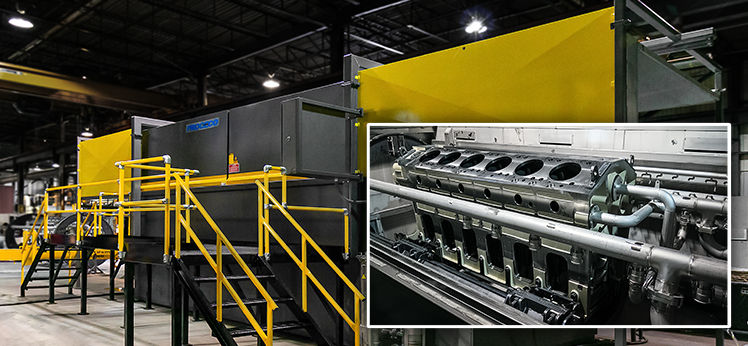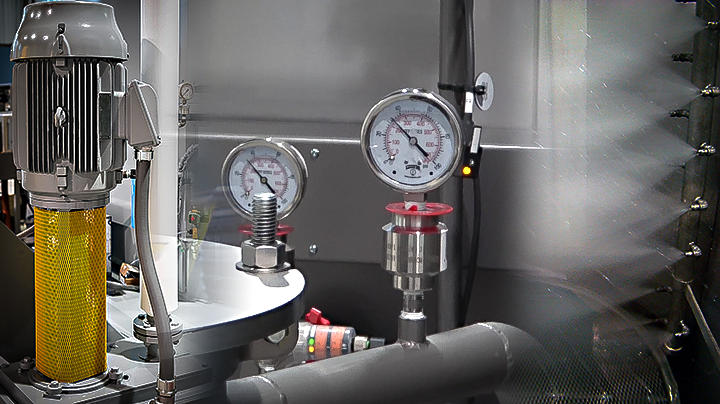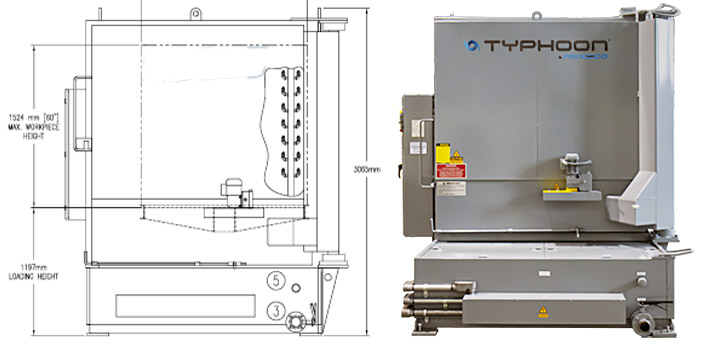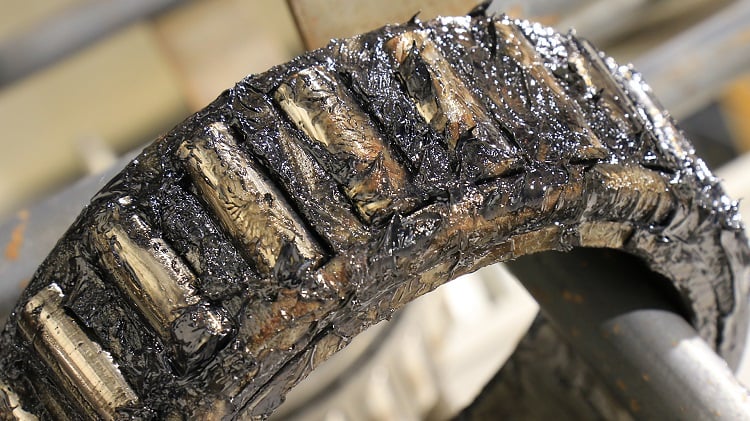Remanufacturing large diesel engine components used in heavy machinery and diesel locomotives is economically feasible. For one, it helps reduce the impact of re-smelting. A remanufactured engine typically requires one to two engines to produce. Parts recycling at least gives the components a second life and cuts down on the need for raw materials such as iron, aluminum and copper.
The typical steps in the remanufacturing process are disassembly, rough cleaning, shot blasting, nondestructive testing, machining, final cleaning, and assembly. When remanufacturing large diesel engine blocks, the scale of equipment required increases significantly. To illustrate the scale, a stripped EMD 710 – 16 cylinder locomotive engine block measures approximately 55”W x 47”H x 147”L and weighs seven tons.
Aqueous cleaning is widely used to rough-clean these blocks, where the removal of grease, oil, carbon and other soils is required. PROCECO has been manufacturing industrial washers specifically for this process for over 40 years. They delivered their first upright locomotive engine washer to the Canadian National Railway in 1981, where it was used to clean ALCO V-20 engine blocks.
There are basically two orientations that are used to clean such large engine blocks: either standing up on end or sitting flat on oil pan rails. Each has its merits when considering operator safety, handling, floor space utilization, and cleaning effectiveness.
SAFETY AND HANDLING
Ideally, the least amount of handing, the better. Up-ending a 12- to 14-ft seven-ton mass is not the preferred method of handling, not to mention the danger of such an unstable load falling over; see Figure 1.
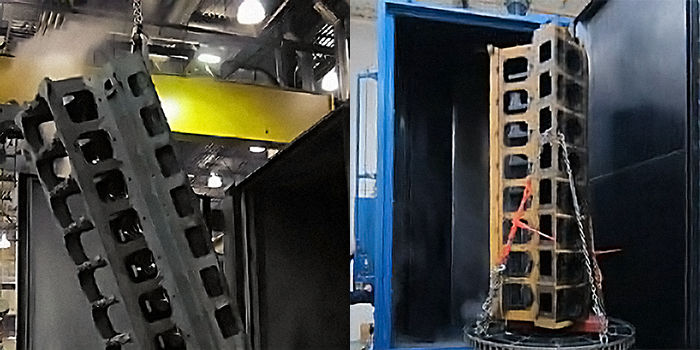
Figure 1. Handling large blocks in a vertical orientation is less safe and includes the risk of falling over.
FLOOR SPACE
By way of simple geometry, washing a block in a vertical position requires the least amount of shop real estate. The other advantage is that the block can be rotated on a turntable with spray nozzles in close proximity. Drainage may also be more effective when the block is mounted vertically. However, many rebuilders prefer to clean the block horizontally (see Figure 2) for optimal handling and safety as noted previously.
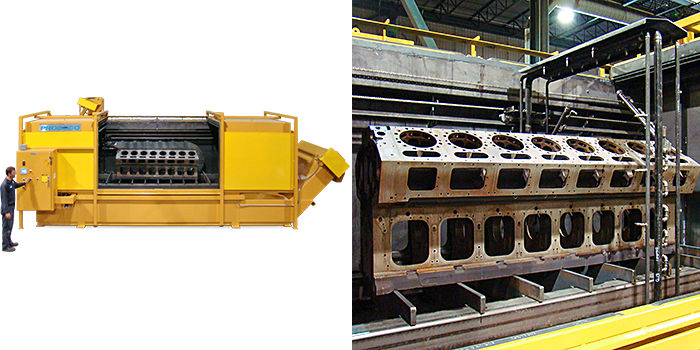
Figure 2. The PROCECO RCP allows for crane or forklift loading and features a reciprocating nozzle frame that travels the length of the block. Floor space is optimized with no dead zones around the workpiece.
CLEANING EFFECTIVENESS
Effectively cleaning tenacious soils from such a large mass requires a higher pressure to provide the necessary impingement as well as a high flow of aggressive hot cleaning solution to loosen and wash away soils. Higher pressures and a hot cleaning solution can also get into areas where direct impingement is not possible; that’s a lot of pump horsepower! However, that added horsepower is only effective if the spray nozzles are close enough to the block to avoid dissipating the spray’s kinetic energy, which will rapidly diminish with distance. See Figure 3.
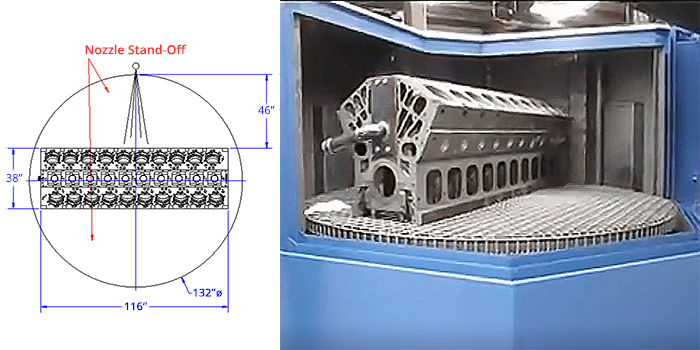
Figure 3. This large turntable washer allows the block to be placed horizontally. This design demonstrates an inefficient use of horsepower and shop floor space with excessive nozzle stand-off distance on both sides of the block.
Oil galleries typically travel the length of the block, branching out to feed the crank and heads, and as such, they cannot rely on just spray alone. High flow must be forced through the galleries to produce enough fluid velocity to effectively wash away oil and debris. Flushing attachments, as they are often referred to, are designed to accomplish this.
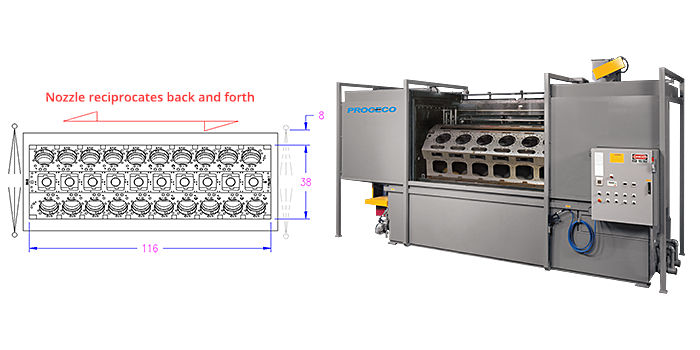
Figure 4. The PROCECO RCP Engine Block Washer allows the block to be placed horizontally. Nozzles reciprocate back-and-forth in close stand-off distance along the length of the block. Blocks can be loaded by overhead crane or lift-truck.
Rotating the block on its horizontal axis during the cleaning process is more costly, but it is an effective method for cleaning the cooling jackets and other internal passages. By continuously filling and emptying these features with cleaning solution, rotation provides a sloshing effect that loosens trapped particles, which can then be carried away by the solution. Rotation also helps thoroughly drain the block of trapped solution so that it can dry more efficiently.
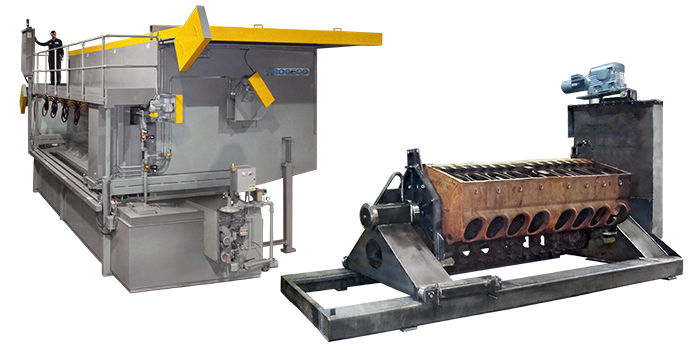
Figure 5. The PROCECO LEW Locomotive Engine Block Washer has a block-rotating fixture. Nozzles reciprocate back-and-forth in close stand-off distance along the length of the block. Fixture is loaded by overhead crane.
These different industrial parts washer configurations are available for cleaning large diesel engine blocks. Safety and efficiency are likely the key factors to consider in this decision-making process, along with footprint, technology and lifetime operating costs. PROCECO engineers are here to assist you in making the best choice that will meet your needs.
